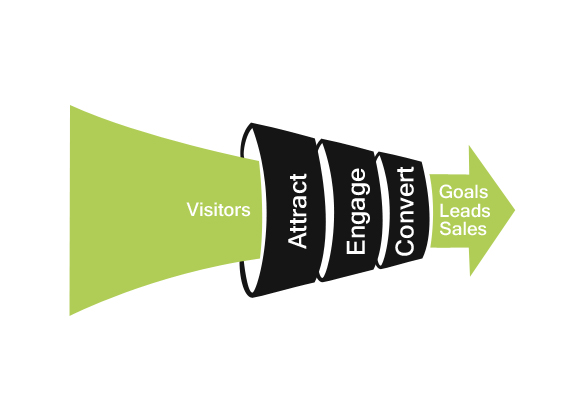Website Conversion Optimisation
What You Need To Know About Website Conversion Optimisation
Getting traffic to a website costs money, and those costs are increasing. This applies whatever strategy that you use, so it is becoming increasingly important to ensure you are getting as much from the traffic on your website as possible. To make money online you have no choice but to optimise your website for conversions.
The big question is how you do it?
-
Get more people to convert
-
Increase the amount of money that they spend
-
Get grazers to come back when they are ready to buy
The first two are easy to understand – you want as many people visiting your website as possible to make a purchase. The third one is important too as it helps to get some of those that don’t initially make a purchase: when they are ready to buy you want them to return to you instead of going to a competitor.
So, how do you do this? How do you increase the conversions on your website? Here are some ideas.
Remove Obstacles
When a visitor to your website encounters obstacles they are less likely to convert. Some of those obstacles are easy to understand, but others are incredibly complex. You might not even know you have created the obstacle, plus there will be other things that you think of as helping the customer, but which are actually preventing them from converting.
Here are some common obstacles to conversion that might exist on your website:=
-
Complexity – do you have too much information or too many options? Is the language complicated or full of jargon? Do you stay on message or stray off into tangents? Do you have too many fields in your website forms?
-
Information – is the information that you provide on your website helping or hindering conversions? Do you have enough, and does it move the visitor closer to taking a positive action? Is the information easy to follow and read / watch / listen to? Are you giving too much information?
-
Design – maybe the design of your website is acting as an obstacle to conversions. Does the style suit your customers and industry? Are your call-to-actions weak or hard to find? Is the text easy to read?
-
Technical – does your website work on mobile devices? Do the pages take a long time to load? Does it work smoothly? Are you rushing the client through the process in an attempt to get the money as soon as possible, or have you included too many stages and pages in the process?
You can take individual elements in the list above to make improvements but the only real way to check if those improvements are working properly is to test them. The most efficient way to do that is A/B testing. As you work to increase your website conversions, A/B testing should become part of your regular routine.
Remove Distractions
Many businesses see white space on a website as something to fill. This type of thinking affects conversion optimisation as people look for things to add to their website when trying to make improvements. They look for features or content or elements that they can add that will increase sales and/or lead capture.
Very often the problem is not that something is missing from the website, though. Instead problems with low conversion numbers can be because there is too much on the website. Too many distractions can get in the way of users, lead them away from call-to-actions, confuse them, and even annoy them
Before you look for things to add to your website you should first analyse it to see if there is anything that you can remove. Here are some examples:
-
Sliders – a well created slider can look attractive, but is it helping with your conversions? The area above the fold on your web pages – the section that visitors can see before they start scrolling – should be where your highest converting content is located. Is that your slider? If it isn’t you should consider removing it.
-
Images in general – you might actually have too many images in general on the page. It is a fine balance that you will only be able to find with testing, but with images you might discover that less is more.
-
Videos – videos are another content element that can be a distraction. Unless they help directly with getting people to convert you should consider removing them from any section of your website that you want people to take action (make a sale, fill out a form, etc).
-
Links – links are important on the internet, but they also take people away from your page. When you do that they might never come back. You should have as few links on your conversion web pages as possible, particularly in the content. Where they are absolutely necessary you should have them open in a new window so that your page remains even after the link is clicked.
Build Trust
Even if you do everything that you can to make the conversion process as easy as possible for your website visitors, you will still lose them if they don’t trust you. If the user is anxious, unsure, fearful, or doesn’t trust something that is on your website, they will go to one of your competitors. It is therefore crucial that you do everything that you can to build trust. Here are some ideas:
-
Make your writing trustworthy – this involves simple things like ensuring it is well written and free from spelling mistakes. Other things that can damage trust in your websites content is over using emotive words that add little value (“fantastic”, “unbelievable”, etc), or using too many exclamation marks.
-
Tell the truth – don’t use false claims or figures that can’t be verified, and make sure your testimonials are genuine.
-
Go easy on the hard sales pitches – if your website is constantly trying to sell (in every blog, every content column, every popover, etc) you will annoy visitors and make them suspicious.
-
Stay on topic – if you are a roofer who wants to generate leads from your website, don’t include a link from your mate who sells custom BMX bikes, regardless of how good they are. It doesn’t look professional so can damage trust.
-
Remember your audience – this applies to the language, tone, and design of your website. If your audience is older and more conservative, for example, a website that uses cutting edge design might put them off.
-
Don’t invade their privacy – asking for too much personal information will make customers weary.
Website conversion optimisation is not a one-time-deal. It is something that you have to work at constantly, changing things that don’t get results, adapting to new trends, dealing with new technologies, and always striving for improvement.



